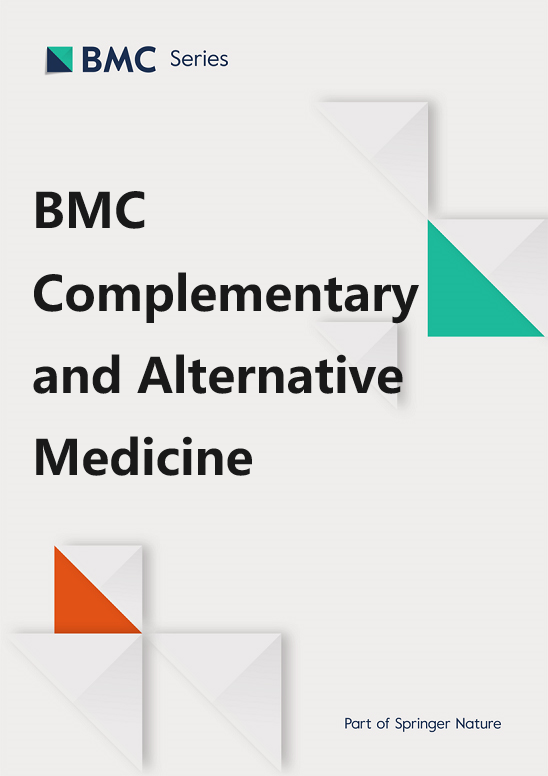从麝香草(Litsea glutinosa (Lour.) C. B. Rob.)中提取的两种罕见黄酮苷:实验和计算方法证明其具有抗糖尿病潜力
IF 3.4
2区 医学
Q1 Medicine
引用次数: 0
摘要
Litsea glutinosa (Lour.) C. B. Rob.属于Litsea属,属于月桂科。本研究旨在通过体内和硅学技术,研究鹅掌楸叶甲醇提取物的植物成分和药理特性,重点研究其抗糖尿病活性。研究人员采用了广泛的色谱和光谱技术来分离和鉴定鹅掌楸中的成分。研究了链脲佐菌素诱导的糖尿病小鼠的抗糖尿病活性,并利用 AutoDock Vina 程序对分离出的化合物进行了计算研究。此外,还通过硅学技术研究了分离化合物在吸收、分布、代谢和排泄(ADME)方面的药代动力学特性以及毒理学特征。本研究从 L. glutinosa 的叶片中分离出了两种黄酮苷类化合物:4΄-O-甲基(2 ̋,4̋-di-E-p-香豆酰)afzelin(1)和槲皮素 3-O-(2 ̋,4̋-di-E-p-香豆酰)-α-L-鼠李糖苷(2)。并通过 1H 和 13C NMR、COSY、HSQC、HMBC 和质谱数据对其进行了表征。虽然化合物 1 和 2 已分别从 Machilis litseifolia 和 Lindera akoensis 以及 Machilis litseifolia 和 Mammea longifolia 中分离出两次,但这是首次从 Litsea 物种中分离出该化合物。给链脲佐菌素诱导的糖尿病小鼠服用谷氨酰胺甲醇提取物,剂量分别为 300 毫克/千克/天和 500 毫克/千克/天,从治疗第 7 天开始,空腹血糖水平显著下降(P < 0.05)。此外,计算研究和 PASS 分析也证实了目前的体内研究结果,即这两种分离化合物与人体胰腺 α 淀粉酶和醛糖还原酶的结合亲和力均高于传统药物。硅学 ADMET 分析表明,这两种分离化合物具有良好的药代动力学和安全性,适合人类服用。根据目前体内和硅学技术得出的结果,谷氨酰胺叶提取物可作为治疗糖尿病的天然药物,分离出的植物成分可用于治疗各种疾病,主要是高血糖症。然而,还需要进行更多的研究,才能广泛地分离出这些植物化学成分,并针对更广泛的目标进行药理活性研究,确定其确切的作用机制。本文章由计算机程序翻译,如有差异,请以英文原文为准。
Two rare flavonoid glycosides from Litsea glutinosa (Lour.) C. B. Rob.: experimental and computational approaches endorse antidiabetic potentiality
Litsea glutinosa (Lour.) C. B. Rob. belongs to the Litsea genus and is categorized under the family of Lauraceae. The study aimed to investigate the phytoconstituents and pharmacological properties of methanol extract of leaves of Litsea glutinosa, focusing on antidiabetic activity via in vivo and in silico techniques. Extensive chromatographic and spectroscopic techniques were applied to isolate and characterize the constituents from the L. glutinosa plant species. The antidiabetic activity was studied in streptozotocin-induced diabetes mice, and the computational study of the isolated compounds was carried out by utilizing AutoDock Vina programs. In addition, the pharmacokinetic properties in terms of absorption, distribution, metabolism and excretion (ADME) and toxicological profiles of the isolated compounds were examined via in silico techniques. In the present study, two flavonoid glycosides 4΄-O-methyl (2 ̋,4 ̋-di-E-p-coumaroyl) afzelin (1) and quercetin 3-O-(2 ̋,4 ̋-di-E-p-coumaroyl)-α-L-rhamnopyranoside (2) were isolated from the leaves of L. glutinosa and characterized by 1H and 13C NMR, COSY, HSQC, HMBC, and mass spectral data. Although compounds 1 and 2 have been reported twice from Machilis litseifolia and Lindera akoensis, and Machilis litseifolia and Mammea longifolia, respectively, this is the first report of this isolation from a Litsea species. Administering the methanolic extract of L. glutinosa at doses of 300 and 500 mg/kg/day to mice with diabetes induced by streptozotocin led to a significant decrease in fasting blood glucose levels (p < 0.05) starting from the 7th day of treatment. Besides, the computational study and PASS analysis endorsed the current in vivo findings that the both isolated compounds exerted higher binding affinities to human pancreatic α-amylase and aldose reductase than the conventional drugs. The in silico ADMET analysis revealed that the both isolated compounds have a favorable pharmacokinetic and safety profile suitable for human consumption. According to the current outcomes obtained from in vivo and in silico techniques, the leaf extract of L. glutinosa could be a natural remedy for treating diabetes, and the isolated phytoconstituents could be applied against various illnesses, mainly hyperglycemia. However, more investigations are required for extensive phytochemical isolation and pharmacological activities of these phytoconstituents against broader targets with exact mechanisms of action.
求助全文
通过发布文献求助,成功后即可免费获取论文全文。
去求助
来源期刊

BMC Complementary and Alternative Medicine
INTEGRATIVE & COMPLEMENTARY MEDICINE-
CiteScore
7.00
自引率
0.00%
发文量
0
审稿时长
3 months
期刊介绍:
BMC Complementary Medicine and Therapies is an open access journal publishing original peer-reviewed research articles on interventions and resources that complement or replace conventional therapies, with a specific emphasis on research that explores the biological mechanisms of action, as well as their efficacy, safety, costs, patterns of use and/or implementation.
 求助内容:
求助内容: 应助结果提醒方式:
应助结果提醒方式:


